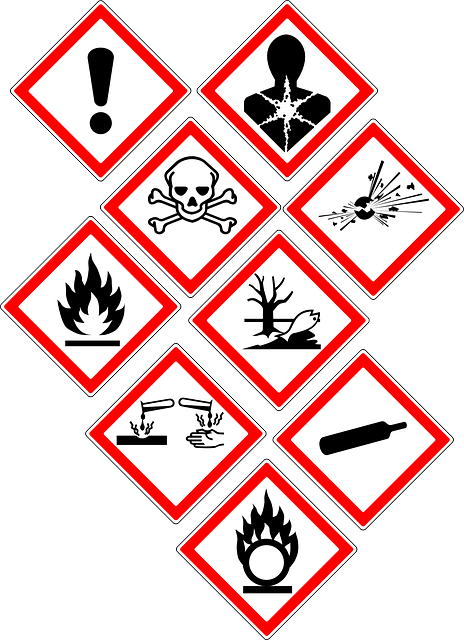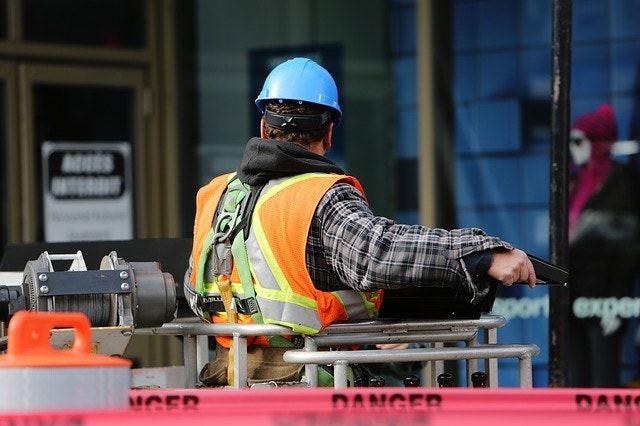Cell Phones in the Workplace: Bad Call
- Jul 29, 2014
 With the never-ending rise in technology over the last 15 years, cell phones have rapidly adapted into something we seemingly cannot live without. What began as crude portable contraptions has evolved into to sleek and powerful devices offering access to a plethora of information combined with multiple platforms for instant global communication at the convenience of your fingertips. However, this rise in technology brings with it an unfortunate downside - personal safety.
With the never-ending rise in technology over the last 15 years, cell phones have rapidly adapted into something we seemingly cannot live without. What began as crude portable contraptions has evolved into to sleek and powerful devices offering access to a plethora of information combined with multiple platforms for instant global communication at the convenience of your fingertips. However, this rise in technology brings with it an unfortunate downside - personal safety.
We've all heard the horror stories, usually involving motor vehicle accidents due to talking and/or texting while driving. While those are most definitely legitimate dangers and a true cause for concern, we might tend to overlook another dangerous aspect of advanced technology - cell phones in the workplace.
There are not quite any concrete numbers available, but this is a very real hazard. Reports claim that since 2006, the number of cell phone related accidents involving injury and death have nearly doubled each year. This is an important concern for the workplace, even more so for industries and occupations that already pose above average hazards.
Accidents Happen Quickly
Consider the following examples of life-changing accidents that were directly related to cellular phone use in the workplace.
Forklift operator Ramon Jamison discusses what happened the day he was distracted by texting and struck a co-worker:
“I usually keep my phone in my locker every morning, but my wife was having an ultrasound that morning and I wanted to know if we were having a little boy or a little girl, so I kept my phone with me,” says Ramon.
“I was moving stacks of pallets in the storage yard when I heard the message alert go off,” he adds. Ramon says he was so excited to find out that he didn’t even think about not checking his text. He looked down and had to focus on his phone for a moment to select and read the text.
“That’s when Ronnie suddenly walked in front of the forklift and I didn’t see him until I heard him shout,” he continues. “The thought of anyone walking in front of my forklift was the furthest thing from my mind.”
What should have been one of the best days of his life ended up being one of the worst. Not only did Ramon lose his job for violating his company’s rules on cell phone use, his actions caused the death of a friend and a co-worker.
Machine operator's split-second decision results in traumatic injury:
Believe it or not, even though you may want to stay in constant contact with your social and family life, very few things really require that you do so. Machine operator Iris McMurray explains how her desire for instant access to information led to an instant injury as well.
“During lunch, my boyfriend and I were texting each other about our last minute weekend trip to the beach. He was trying to find a nice hotel that still had a vacancy,” says Iris.
“We’re not supposed to take our phones into the production area, but everybody does it, so I figured it would be okay. Plus, I was really eager to find out if he found a place to stay,” she adds.
Iris said she worked for a while and then noticed she had a text from her boyfriend concerning their hotel room.
“It happened so fast! As I tried to reply, I somehow dropped the phone right into my machine,” she says. “My first reaction was to grab it before it got eaten by the machine, or worse yet, jam up the production line.” When Iris dropped her phone, she tried to grab it off of the machine’s conveyor, but her hand was crushed when it was caught between the conveyor belt and the roller.
"I’ll have to live with that split second decision for the rest of my life. If I had just followed company policy, and just waited until my afternoon break. If I had just thought about how dangerous texting around that machine was. Now, every time I look at my hand, I wonder, what if?” Iris concludes.
Iris could have waited to correspond with her boyfriend; it really would not have made any difference other than her eagerness to know the weekend plans. We’ve all heard the expression, “Curiosity killed the cat.” In this case, a desire for instant information injured Iris.
Also, consider the following recent accidents involving cellphone usage while working.
• A N.B worker steps in front of a truck while talking on his cell phone and dies
• A major Metrolink rail crash that kills 18 people is directly related to an engineer text messaging on the job
• A truck driver slams into a completely stopped car while using his cell phone and kills a woman
And that’s just the tip of the iceberg.
Create Awareness, Adopt a Policy
Many employers have strict restrictions in place for using cell phones in the workplace, especially while performing duties. However, it's one of those things that's often ignored by workers and even management. While it's nice to have the ability to be in constant contact with family and friends, we have to understand that it can cost us our health, our life, or the life of an innocent co-worker.
If you're working on a ladder, a lift, with heavy equipment, potentially dangerous machinery or hazardous materials, this risk is exponentially multiplied. When performing any of those duties, your top priority needs to be safety - and that's not possible when you're distracted. Even if you're standing safely in place on the ground, the temporary distraction of a text or phone call may render you incapable of seeing and avoiding a falling object that could cause injury or death.
Be sure to consider this next time you're on the job. If you're an employer, take the time to have a serious talk with your employees and implement rules for using cell phones in the workplace. If you're an employee, speak to your employer about this hazard and ask them to address your concerns in an effort to educate your co-workers and create a safer and more efficient workplace for everyone.


 When one considers workplace accidents and workplace safety, they might agree that with the proper education and practices a good majority of injury incidents could be prevented. While there are surely a fair share of freak accidents, there's also a fair share that occur due to conditions such as sloppiness, carelessness, lack of safety education, lack of training and poorly maintained or faulty equipment.
When one considers workplace accidents and workplace safety, they might agree that with the proper education and practices a good majority of injury incidents could be prevented. While there are surely a fair share of freak accidents, there's also a fair share that occur due to conditions such as sloppiness, carelessness, lack of safety education, lack of training and poorly maintained or faulty equipment. To showcase the importance of personal protective equipment in the workplace, we've put together this little fact sheet. Not only can the proper safety gear prevent accidents or death, it can drastically diminish the chances of serious injury on the job.
To showcase the importance of personal protective equipment in the workplace, we've put together this little fact sheet. Not only can the proper safety gear prevent accidents or death, it can drastically diminish the chances of serious injury on the job. Nearly a year after the 2012 year has ended, the numbers have been compiled and figures provided by the federal government are showing that there were fewer serious workplace injuries as compared to 2011. However, the numbers are also showing that the injuries resulted in longer periods of time away from work, with the average amount of time being 9 days for recuperation as compared to 8 days in 2011.
Nearly a year after the 2012 year has ended, the numbers have been compiled and figures provided by the federal government are showing that there were fewer serious workplace injuries as compared to 2011. However, the numbers are also showing that the injuries resulted in longer periods of time away from work, with the average amount of time being 9 days for recuperation as compared to 8 days in 2011.